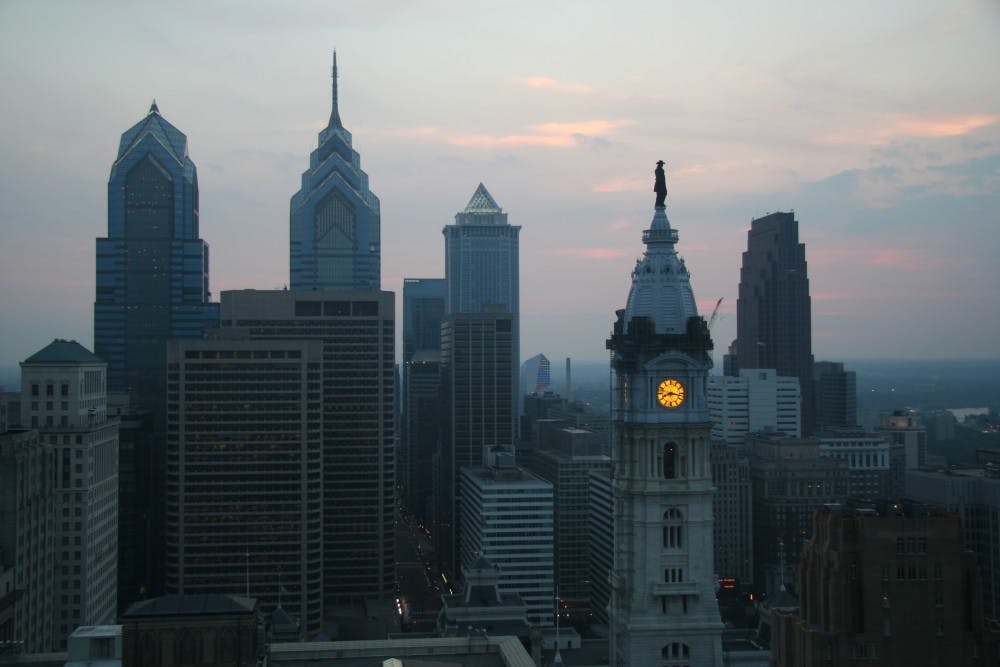One Liberty Place, soon to be demoted to only the third tallest building in Philadelphia, was once the unchallenged pioneer of the city’s ever–evolving skyline. Clad in glass, very, very fancy marble, and capped by a tiered, art deco top complete with a spire, the building was extremely controversial when it was built in 1984.
Championed by the wealthy and influential of 1980s Philadelphia, the tower shattered an unwritten “Gentlemen’s Agreement” that no building should rise above the cap resting on William Penn’s stone head from his perch atop City Hall. When City Hall was constructed, it was among the tallest buildings in the world—an early twentieth century monument to progress and industry, with a dash of historical consciousness for good measure.
Buildings nearly as tall as City Hall appeared over the years, but none were so bold as to challenge William Penn's dominance over Philly’s growing urban sprawl. Until, that is, Willard Rouse III brought the plans for One Liberty Place to life. He was met with a wall of resistance, which Professor Francesca Ammon, a cultural historian of the built environment who teaches both city planning and historic preservation courses here at Penn, believes likely came from “the broad population who were invested in a certain tradition here.” This building, she notes, “was going to be the tipping point…it was about opening up the floodgates for future buildings.”
Ultimately, One Liberty Place was built, permanently altering Philadelphia’s skyline. Within five years, seven more skyscrapers taller than City Hall sprang into being. But was there really any substantive change? As Professor Ammon points out, much like City Hall, One Liberty Place is also a monument to industry and progress, “so it’s a replacement in one way, but it’s just updating the image and still demonstrating the power of capital and what that means architecturally.”
After it was built, the controversy surrounding One Liberty Place died down. The height limit had been decisively and permanently broken, and yet the city still stood. Like all other cities, Philadelphia is an unfinished project. It is constantly growing, changing, and evolving, and it will continue to do so as long as the world remains in motion. But this skyline, this vista of buildings that loom up behind the reaches of University City, are in no way Philadelphia in its entirety.
Professor Ammon describes Philadelphia as “a city of neighborhoods,” neighborhoods that go far beyond the comparatively small area that encompasses Center City. It is these neighborhoods, made up by buildings that can't compete with the soaring height of the towers of Center City, that are more representative of Philadelphia.
“It’s funny,” she says, smiling and leaning back in her chair, “[the skyline] always seems far away to me. No matter where you are it’s always far away.”
Philadelphia is a geographically huge World Heritage City, steeped in historical meaning. So, while this glass homage to modern urbanity certainly has its place in the visual culture of Philadelphia, it is by no stretch all that there is.







